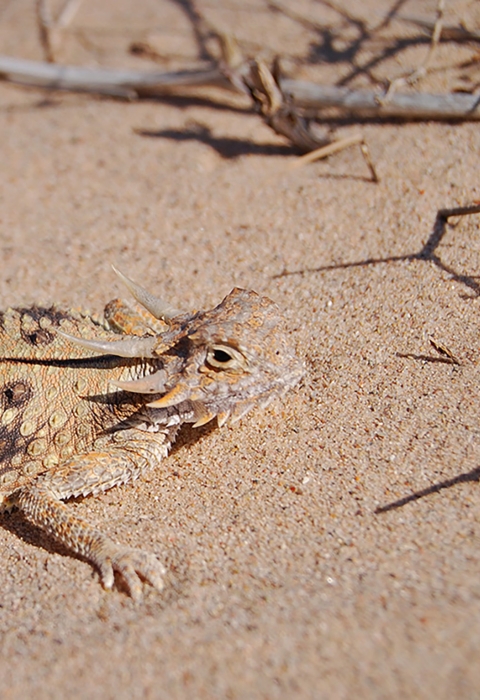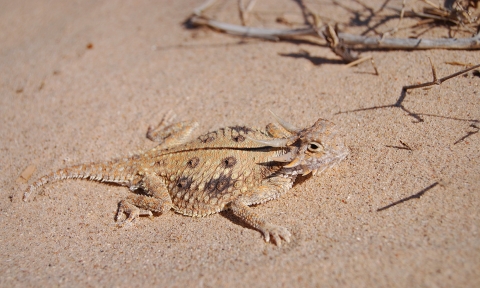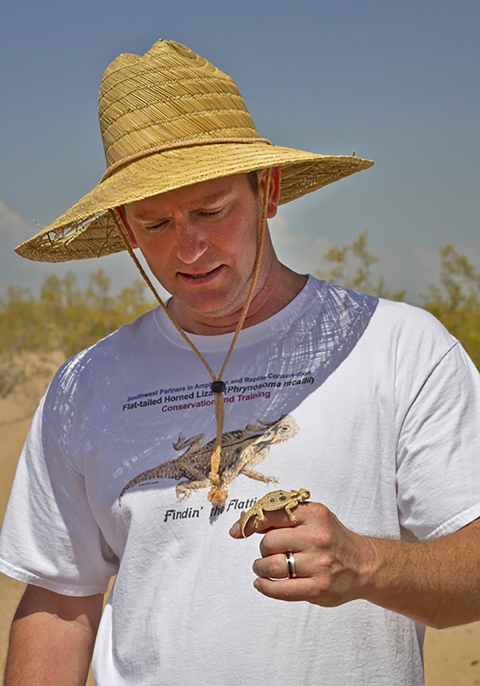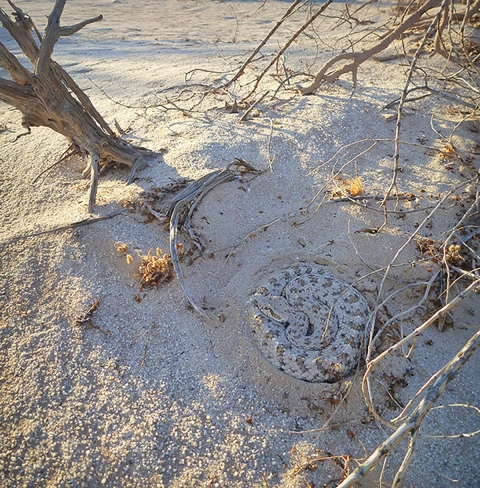Twenty years ago, flat-tailed horned lizards were at the center of a controversial proposal to be listed under the Endangered Species Act. With the most restricted range of any of the species of horned lizard in the United States, and with most of the lizard’s habitat managed by state and federal agencies, there was concern about how listing the species might affect various land uses.
The U.S. Fish and Wildlife Service brought together all concerned parties to seek an alternative to listing that would ensure conservation of the lizard and its habitat. In 1997, the first Rangewide Management Strategy was released, and the Flat-Tailed Horned Lizard Interagency Coordinating Committee was born.
The strategy identified five management areas and one research area for the species, with specific goals for each Management Area aimed at ensuring conservation of the flat-tailed horned lizard in perpetuity. The committee is comprised of 11 different stakeholders from state and federal agencies, each of whom is a signatory to the strategy.
“This multi-agency agreement was completed at a time when partnerships were not in vogue,” said Robert Lovich, senior natural resource specialist for the U.S. Navy Engineering Facility Command Southwest. This agreement “forged the partnership model that’s now become the standard for at-risk species.”
Naval Air Facility, El Centro, one of the signatories to the strategy manages about 38,300 acres of habitat for the lizard across two management areas – the East Mesa and West Mesa. Naval Air Facility El Centro provides support for aviation squadrons from all branches of the U.S. Armed forces and is the winter home of the world famous Blue Angels.
Also under the Department of the Navy, the U.S. Marine Corps manages much of the Yuma Management Area on the Barry M. Goldwater Range West in Arizona.
This, too, is a vital training and testing landscape for the Marines. Naval Facilities Engineering Command Southwest is another Navy signatory to the strategy and member of the committee.
Their mission is providing facilities support, logistics, and expertise to all Navy and U.S. Marine Corps installations in the Southwest. For Lovich, a key to the strategy’s success is that “it accommodated everyone’s land uses.”
Monitoring efforts conducted under the strategy show that over the past 20 years, less than one percent of the lizard’s remaining habitat has been impacted.
The composition of the strategy oversight group has also remained steady, and some of the agency representatives like Lovich have spent more than 10 years working together as a team.
As Felicia Sirchia, wildlife biologist for the Service’s Palm Springs Fish and Wildlife Office puts it, “we may have differences of opinion but everyone keeps the focus on the species, and we genuinely enjoy working with each other on this conservation program.”






